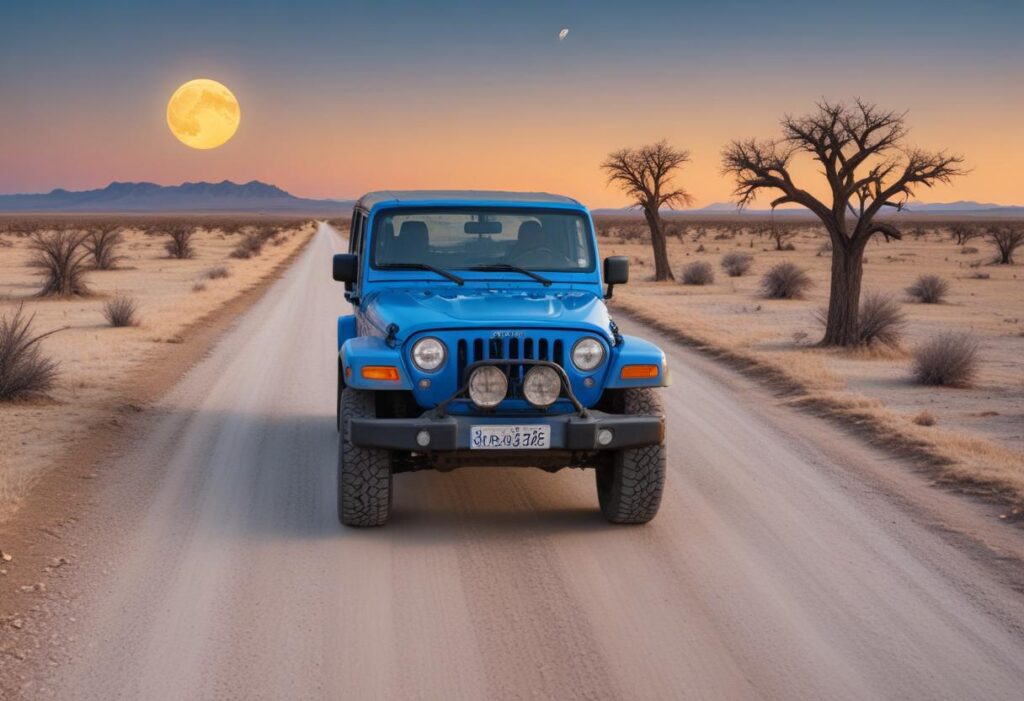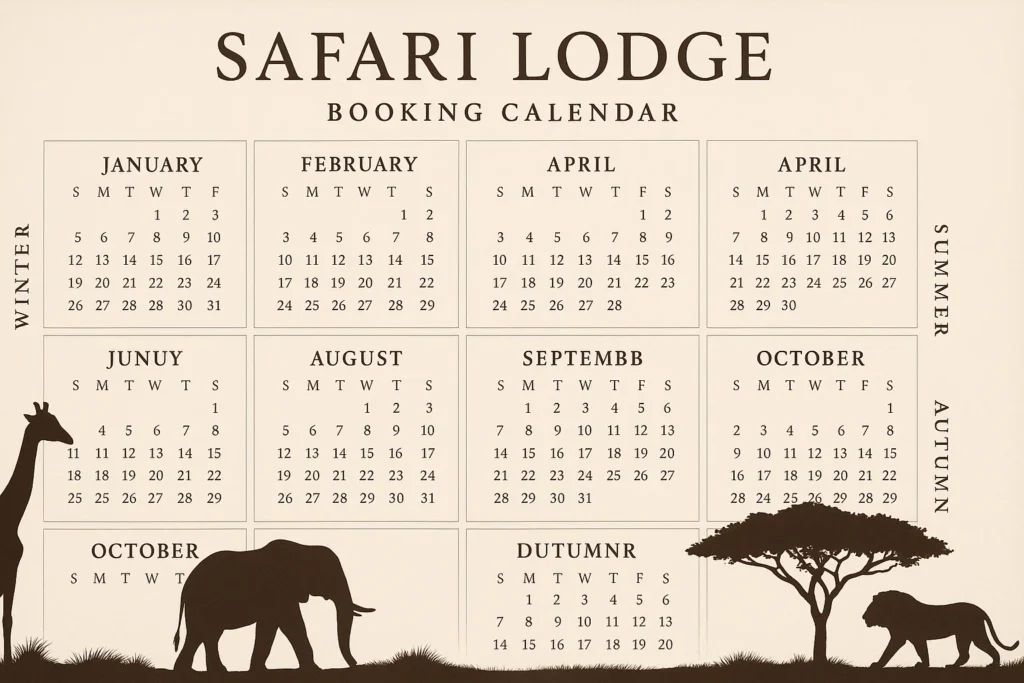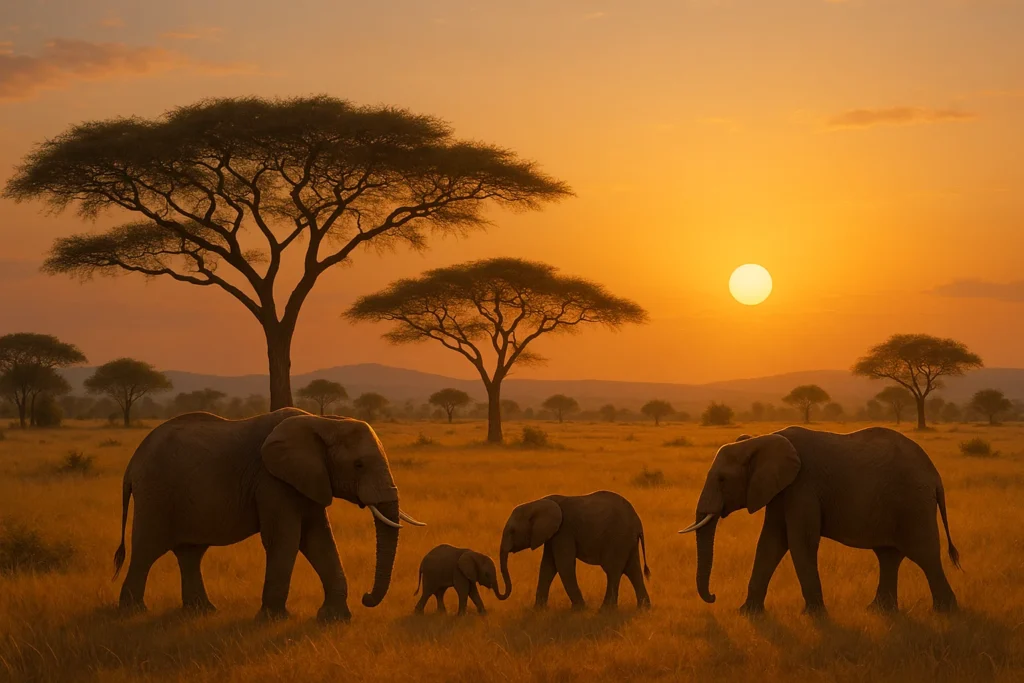Etosha National Park is one of Namibia’s safari gems, and reaching it is surprisingly straightforward. Whether you’re flying in, driving from Windhoek, or arranging a guided transfer, this guide will help you choose the best route based on time, budget, and travel style.
Starting Point: Windhoek
Most international travelers land at Hosea Kutako International Airport (WDH), located about 45 km east of Windhoek, Namibia’s capital. From here, you have three main options to reach Etosha:
- Fly to a nearby airstrip
- Self-drive
- Book a guided transfer or tour
Let’s explore each option.
Option 1: Flying to Etosha (Fastest)
There are no commercial airports within Etosha National Park, but several airstrips serve nearby lodges and camps:
Closest Airstrips to Etosha:
- Ongava Airstrip (near Okaukuejo, southwest gate)
- Mokuti Airstrip (near Namutoni, east gate)
- Etosha Heights or Dolomite (west Etosha, limited service)
Airlines:
- FlyNamibia Safari and private charter companies like Wilderness Air offer scheduled or chartered flights from Windhoek to these strips.
Duration:
- 1h 15m to 1h 45m depending on location
Pros:
- Fast and scenic
- Ideal for high-end lodge travelers
Cons:
- Expensive
- Requires coordination with lodge transfers
Option 2: Self-Driving from Windhoek (Most Popular)
Namibia is one of Africa’s top self-drive destinations, with well-maintained roads and minimal traffic.
Route Options:
- B1 Highway (main route): Windhoek → Okahandja → Otjiwarongo → Outjo → Etosha (Andersson’s Gate)
- Alternative via Tsumeb: For access to the eastern gate (Von Lindequist)
Drive Time:
- Windhoek to Andersson’s Gate (Okaukuejo): ~5.5 to 6 hours (435 km)
- Windhoek to Von Lindequist Gate (Namutoni): ~6 to 6.5 hours (530 km)
Road Conditions:
- Paved (tarred) most of the way; gravel inside the park but suitable for 2WD vehicles during dry season.
Rental Tips:
- 2WD is sufficient in dry months, but 4x4s offer better clearance and flexibility.
- Stock up on fuel and water in towns like Outjo or Tsumeb before entering the park.
Option 3: Transfers and Guided Tours (Easiest)
Many safari companies offer round-trip packages from Windhoek to Etosha.
Types:
- Private transfers in air-conditioned 4x4s or minibuses
- Group tours (3 to 7 days), often combined with stops in Swakopmund or Damaraland
Duration:
- 6 to 7 hours with stops or en route sightings
Best for:
- Travelers who prefer not to drive
- First-time visitors wanting local insights
Which Gate Should You Use?
Etosha has several entry points—your route depends on where you’re staying:
| Gate | Best for Accessing | Notes |
|---|---|---|
| Andersson’s Gate | Okaukuejo, Ongava, Ombika | Closest to Windhoek, main entry point |
| Von Lindequist Gate | Namutoni, Mokuti, Onguma | Ideal if coming via Tsumeb |
| Galton Gate | Western camps (Dolomite) | Remote, scenic, less crowded |
If visiting multiple camps, you can enter from one gate and exit from another—just plan fuel and timings accordingly.
Travel Times at a Glance
| Mode | Travel Time | Starting Point | Notes |
|---|---|---|---|
| Domestic Flight | 1.5–2 hrs | Windhoek | Fast but pricey |
| Self-drive (B1) | 5.5–6.5 hrs | Windhoek | Flexible, popular |
| Guided Transfer/Tour | 6–7 hrs | Windhoek | Comfortable, hassle-free |
Conclusion
Getting to Etosha National Park is part of the adventure, whether you’re cruising Namibia’s open highways or flying over its dramatic landscapes. Each route offers its own benefits—speed, freedom, or ease—so choose the one that fits your travel style. However you get there, Etosha’s wildlife and scenery will make it well worth the journey.
Explore more practical travel advice and safari planning tips in our blog!
Frequently Asked Questions (FAQs)
Not in the dry season—main routes are 2WD accessible. In wet months, 4×4 is safer.
Yes, as long as you stick to park hours and have the correct entry permits.
Yes, at main camps like Okaukuejo, Halali, and Namutoni—but fill up before entering.
At least a month in advance, especially during high season (June–October).






